14 Cookie Dough Mistakes That Everyone Makes
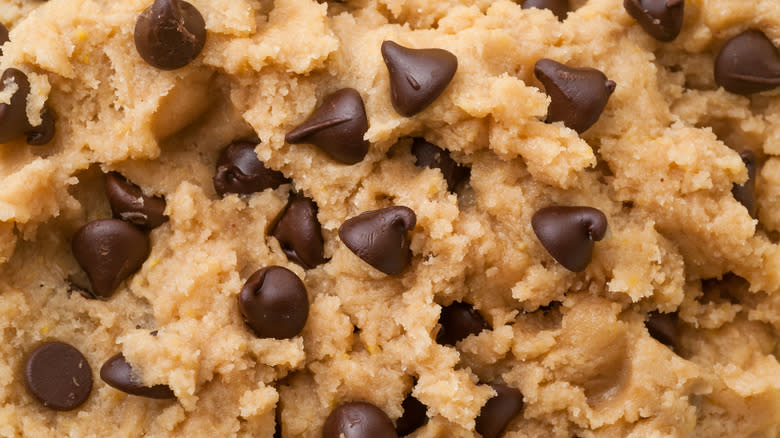
The best part about making cookies, in our view, is the dough. Spooning the leftover bits of uncooked dough into our mouths and licking the bowl clean is a childhood tradition that virtually everyone has partaken in at some point. Cookie dough provides an intensity of flavor and a creamy, chewy texture that's somewhat altered when we bake it (hey, we're not complaining here -- we love cookies, too!), and it's so popular as a food item in itself that it's found its way into a vast array of desserts, ice creams, and sweet treats.
Get cookie dough wrong, however, and you're in for some serious trouble. Raw cookie dough is notorious for being potentially harmful to health, due to the bacteria that can reside in uncooked flour and eggs. As well as this, cookie dough may seem simple, but it's surprisingly tricky to get just right. Making cookies is a science, and if you get your proportions wrong, use the wrong ingredients, or make too many substitutions, your dough will end up producing some pretty poor results. Luckily, these common mistakes are pretty simple to avoid, helping you produce delicious (and hopefully edible) cookie dough every time.
Read more: 8 Baking Sheet Mistakes You Want To Avoid
Assuming You Can Never Eat Raw Cookie Dough
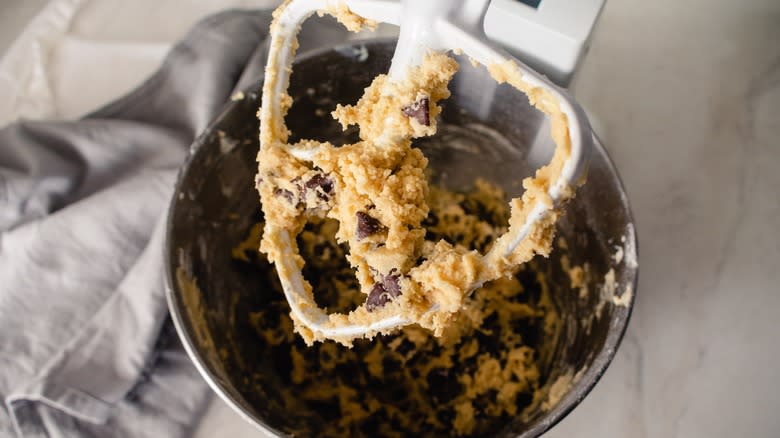
Raw cookie dough is one of those foods that strikes joy into the hearts of kids worldwide and fear into the hearts of doctors. This is largely because, for the most part, it's pretty risky to eat. Most cookie doughs contain raw eggs and flour, and these can both be pretty risky, with the eggs possibly containing Salmonella and the flour being surprisingly dangerous, as well. Flour can be tarnished due to the wheat it's made from coming into contact with animal feces containing E. coli, which then can end up in the bag on your shelf, and in your cookie dough.
Crucially, however, assuming that all raw cookie dough is dangerous is a mistake. Using heat-treated flour (though it can be tricky to find in stores, and you should not attempt to treat it yourself) and pasteurized eggs can significantly reduce the risk of food poisoning by killing off any bacteria beforehand, allowing you to enjoy the dough raw. Cookie doughs that use egg-free and/or flour-free recipes may also pose less of a risk. Additionally, certain food companies make ready-to-eat raw cookie dough that you can buy in stores and enjoy at home. It's vital, though, that you don't take chances by eating cookie dough that you're not sure is safe.
Using The Wrong Type Of Flour
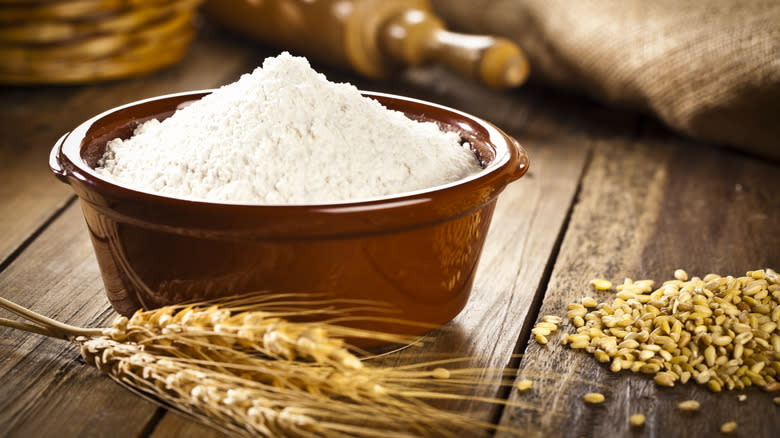
Most cookie recipes contain flour, but while different types of flour generally look the same, they can produce seriously different results. That's why it's important to make sure you've got the right type for your cookie dough. You should generally use all-purpose flour for cookie dough unless your recipe specifically states otherwise. All-purpose flour is free of the baking powder and salt that self-rising flour contains, and if you throw the latter in with your regular recipe alongside your extra leavening agents, you can end up with a cookie that's too puffed up and airy.
Additionally, it's useful to remember the differences between certain types of all-purpose flour. Flour can be both bleached and unbleached, with bleached flour being chemically treated and having somewhat of a finer texture, making your cookies less dense. Unbleached flour, on the other hand, will make your cookies a little thicker and crispier. Although both bleached and unbleached flour are fine to use in cookie dough, it's worth keeping the difference in the cookies they produce in mind; otherwise, you might end up with a consistency you weren't expecting.
Throwing All Your Ingredients In At The Same Time
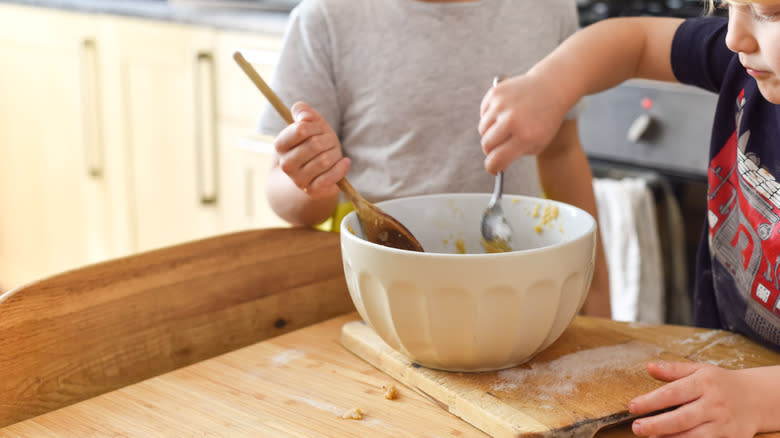
Making cookie dough is a pretty rustic, wholesome experience -- but that doesn't mean you should get sloppy with your technique. One frequent mistake that people make with cookie dough is combining all their ingredients in one go, without thinking about the effects of doing so. By doing this, you open yourself up to a world of lumpy cookies that have poorly distributed ingredients and flavors and lack any air.
If you're putting in all your ingredients at once, you're missing out on the important step of creaming your butter and sugar together. As Kathryn Gordon, chef-instructor of pastry and baking arts at the Institute of Culinary Education, explains to Martha Stewart, "During the creaming process, sugar physically makes space for the butter to hold additional liquids." This essentially allows all of your components to incorporate with each other more successfully and gives you an overall smoother dough that creates smoother cookies.
By mixing your dry ingredients before adding them to your wet ones, you're also doing your cookies a world of good. Sifting your flour together with your baking soda and salt ensures that there are no chalky deposits of dryness, that they're mixed properly, and that everything's nice and airy.
Measuring Your Ingredients Poorly
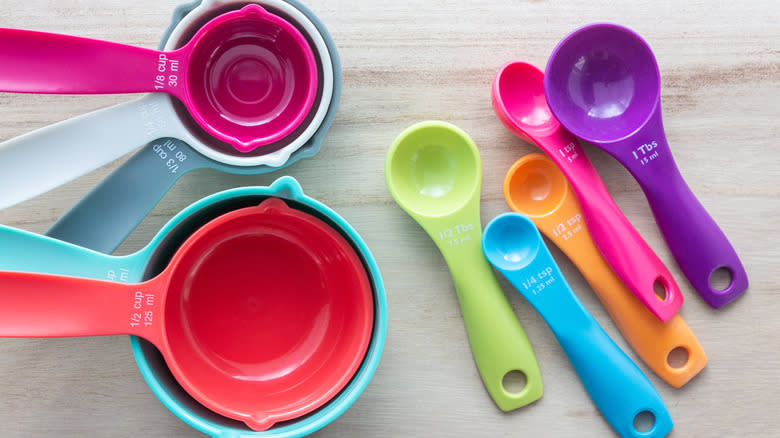
Measuring is king when it comes to making cookie dough. Although it's tempting to think you can just eyeball it, having even a little too much of one ingredient can result in your cookies being too greasy, too dry, or too weighed down by add-ins like chocolate chips or nuts. Additionally, assuming that every tablespoon from your utensil drawer is the same size as others, or that you know how a measurement will translate into dry weight, will also set you up for a world of failure and terrible cookies.
Therefore, you must be as precise as possible when making cookie dough. The most fail-safe way to nail your measurements is by using weight. By purchasing an electric scale, you can ensure that your cookie dough proportions are correct, down to the very last gram. If you don't have a scale, a set of measuring cups and spoons is the next best thing. When you're using measuring cups, you should always ensure that they're level on their surface, to avoid inadvertently adding in any extra ingredients. You should also always measure your dry ingredients before your wet ones so that you're not left trying to scrape flour from the inside of a soggy cup.
Overmixing Your Cookie Dough
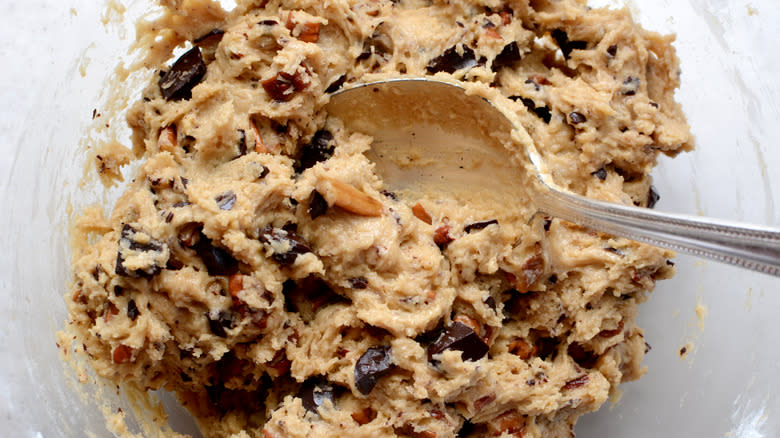
Mixing your cookie dough is one of the most fun parts of the process, and the bit that your kids will enjoy the most. Just make sure that you don't get carried away. While you want to make sure your cookie dough is well incorporated, overmixing it can lead to dense cookies. When you mix your cookie dough for too long, you overwork the flour, developing its gluten content. This gluten content then makes the dough tougher and chewier, and not in a good way.
Overmixing cookie dough can also lead to it becoming somewhat greasy, as when the mixture warms up from the mixing process, the fat in it starts to melt and separate. You should, therefore, only mix until things have just come together. When well-mixed, your cookie dough should look smooth and incorporated, with no cracks or separation. There shouldn't be any deposits of ingredients that haven't been mixed in fully, and any add-ins should feel distributed evenly throughout the dough. If you notice that your dough is starting to feel a little difficult to handle, or that it's becoming a bit too shiny or fatty, stop mixing it immediately.
Forgetting To Chill Your Dough
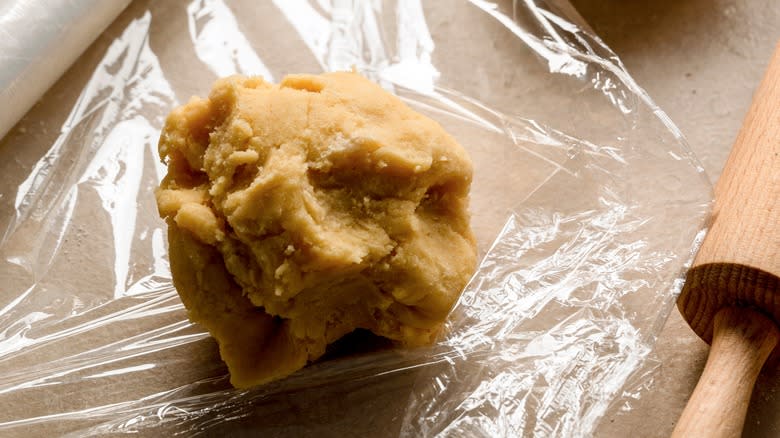
After whipping up cookie dough, it can feel excruciating to have to wait to cook it while it chills. Failing to do so, though, will end up ruining your finished product. When you chill your cookie dough, you help to firm up its fat content. This results in the cookies having a slower spread when they're eventually cooked, making them thicker and more satisfying.
Chilling cookie dough also results in more flavorful cookies, as even a short blast in the fridge can dry them out slightly, helping to intensify their flavors. This slight dryness also gives them a much better texture, allowing you to nail that perfect balance of crispiness on the outside and chewiness within, instead of them just tasting doughy. The good news is that you don't have to chill your cookie dough for too long. As little as 30 minutes in the refrigerator will make a big difference, helping them firm up and dry out. Chilling them for slightly longer (around an hour) will cause them to spread even less, but after that point, it won't make too much of a difference.
Softening Your Butter Too Much
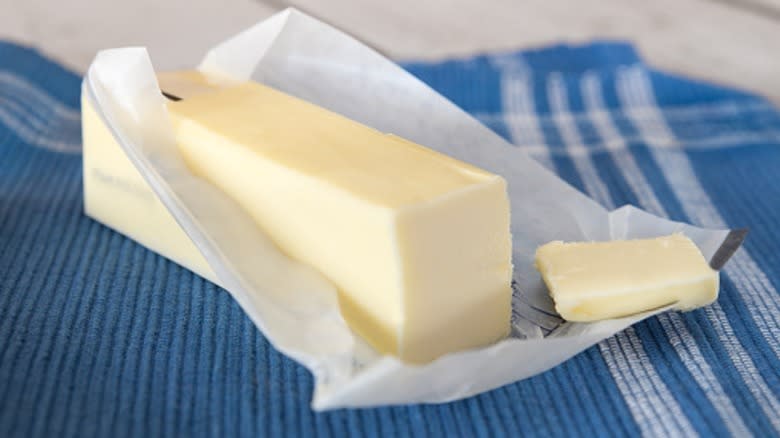
If you've ever tried to make cookies with rock-hard butter from the fridge, it'll be very clear why softening it is essential. However, it's entirely possible to go overboard. Your butter needs to be soft enough to cream easily with your sugar, which helps to incorporate air into your cookies and allow the ingredients to meld together properly. Way too many people go too far, however, and overly soften or melt their butter. When this happens, your butter will become too aerated, and once the air bubbles in them pop and flatten, your cookie dough will be supremely greasy.
If you're softening your butter in the microwave, it's crucial to remember that it can go from the perfect consistency to too soft in a matter of seconds. It's for that reason that we would recommend softening it more slowly, by leaving it out at room temperature. A stick of butter will usually take around 30 to 60 minutes to soften enough to be used, and you can check whether it's ready by taking its temperature (you won't want it to be warmer than around 65 degrees Fahrenheit), or by pressing it lightly with your fingertip. If it's pliable, but not overly silky or loose, it's probably good to go.
Making Too Many Ingredient Substitutions
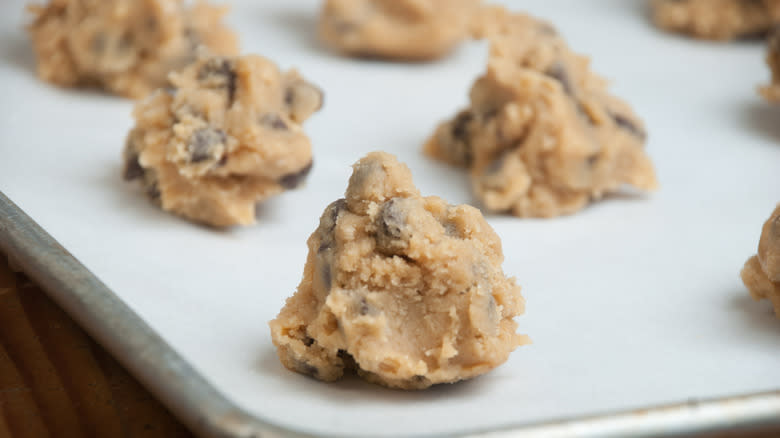
For many people, cookies are a blank canvas upon which to experiment. This, combined with a world where there are more ingredient substitution options for dietary requirements and preferences than ever before, can lead to some people going pretty wild with their subs. Making too many swaps for alternative ingredients, however, can alter the texture and flavor of your cookies too much, causing them to be unrecognizable.
Baking cookies, it should be remembered, is sort of an act of chemistry: You need the right combination of fats, carbohydrates, proteins, and heat to create the reaction that results in crispy, chewy, gooey treats. Any substitutions you make will alter this balance. That's not to say that you can't make any substitutions whatsoever -- but you should always seek out a pre-written recipe that uses the ingredients you wish to incorporate, rather than taking a chance on a basic formula and keeping your fingers crossed for a good result. If you are swapping out ingredients in your normal recipe, make sure you do some research on whether you need to alter their quantities or how you use them before throwing them in.
Adding Too Many Ingredients To Your Dough
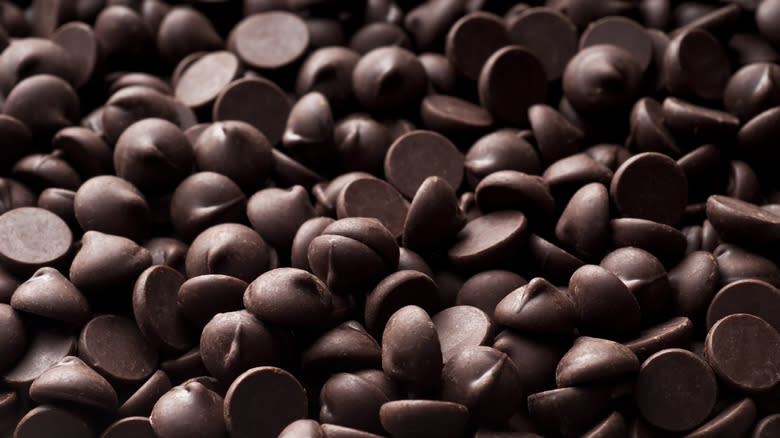
One of our favorite things about cookies is how perfect they are as a vehicle for other flavors. Chocolate chips, nuts, dried fruit, sprinkles -- all of these delectable add-ins can alter your cookies in wonderful ways, adding crunch, depth of flavor, and a pop of sweetness. Unfortunately, though, being too bold with your additional ingredients, and adding too many in, will fundamentally alter the balance of elements in your cookie dough and may result in some irreparable problems when you cook it.
The main issue with putting in too many add-ins is spreading. If your recipe is chock-full of chocolate chips or nuts, it will prevent the cookies from being able to spread properly when they warm up, and you'll end up with big, unevenly cooked balls of dough. Incorporating too many add-ins can also lead to your flavor becoming unbalanced, and you not getting enough of the actual cookie itself. As well as this, placing in too many ingredients can compromise texture, and you may find that your cookies are either overly crispy or crunchy or else too gooey, due to being full of melted chocolate. While we don't want to prevent anyone from throwing in their favorite additions, we recommend you play it safe.
Using Stale Baking Powder Or Soda
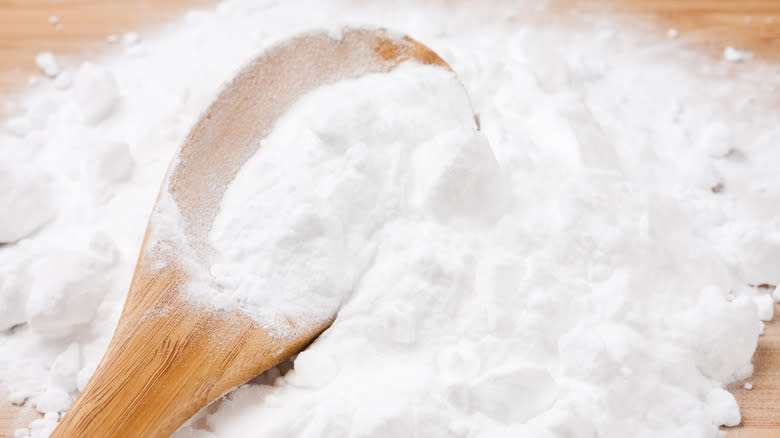
Baking powder and baking soda frequently show up in cookie dough recipes, and without them, you'd have some pretty flat cookies. These ingredients are part of a crucial chemical reaction that occurs in the dough when it's cooked, creating and releasing gas that forms air pockets. This results in your cookies spreading adequately and having a lighter texture throughout.
When you use stale baking powder or soda, though, all of this goes wrong fast. Stale or expired powder or soda can become inactive and fail to produce the chemical reactions required, and this means that your cookies won't spread properly. As a result, your cookies will be way too dense and round.
To avoid this, you should always test your ingredients before using them, especially if it's been a while since you last baked. To test baking soda, combine a small amount with a squirt of vinegar. If it bubbles up vigorously, it's still fresh and good to go. To test baking powder, on the other hand, simply drop a small amount into some warm water. If it fizzes and bubbles immediately, you can safely use it in your cookies.
Not Adding Enough Flour
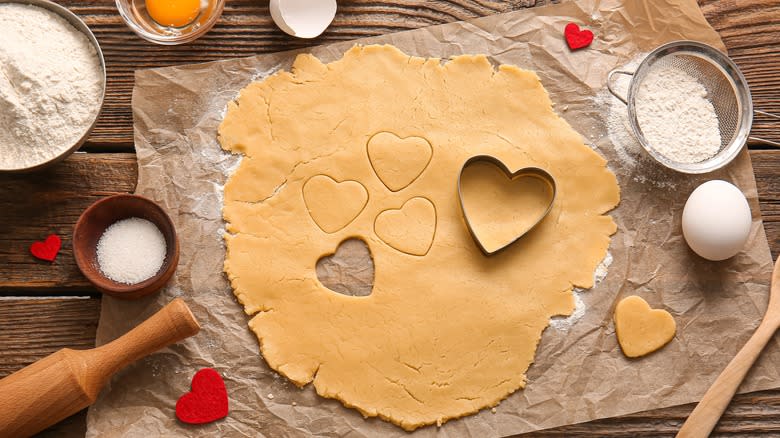
It's no secret that you need flour to make cookie dough. However, despite this ingredient being utterly essential to the success of your cookies, it can be surprisingly easy to add too little. Doing this will result in disaster for your delicious bakes. Flour is essential to the structure of cookie dough and cookies and is what keeps them plump and substantial when they cook. Adding too little of it can result in your cookies spreading way too much, giving you a crispy, flat result.
The fix for this, though, is refreshingly simple: Just add more flour. If you found that your last batch of cookies was too flat, add in a couple of extra tablespoons of flour for your next batch. Before you bake the whole lot, it's always a good idea to bake a test cookie first, to see how your flour-to-other-ingredients ratio is faring. This should give you a good idea of whether you need to add more of anything or whether you're good to go.
Using Artificial Vanilla In The Dough
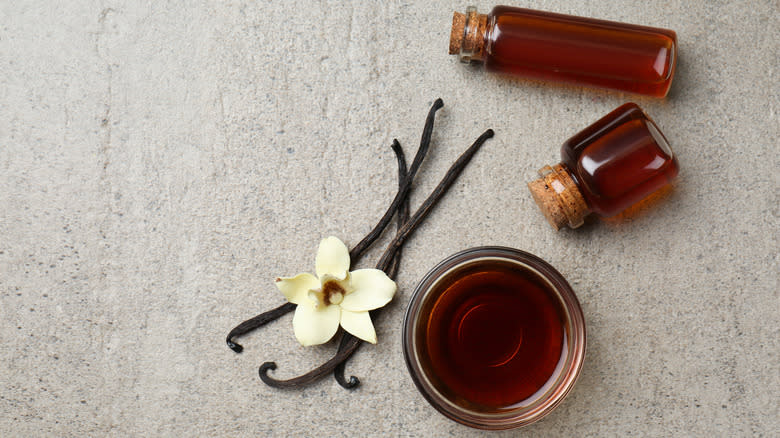
Many cookie recipes use vanilla, and not just ones that have the spice's flavor front and center. Vanilla not only gives your cookies a fragrant, slightly floral flavor, but it also serves to highlight and uplift dairy flavors. The creamy notes it brings to baked goods can therefore make your cookies taste more buttery and rich, and it can also help to intensify the flavors of milk and white chocolate.
Regrettably, though, this won't happen if you're using artificial vanilla. Artificial vanilla (or imitation vanilla) is made using synthetic vanillin, as opposed to the genuine, naturally occurring vanillin in vanilla beans. When it's particularly poor quality, artificial vanilla will have a distinctly chemical tone to its flavor and scent, and this will inevitably end up in your cookies. "No matter the quality of your other ingredients, your cookies will wind up tasting artificial," Sparrow + Wolf's executive pastry chef Harlee Morrow warns Eat This, Not That. That's not to say that all artificial vanilla products will produce a bad result, and some out there may be indistinguishable from the real thing. Where possible, though, it's usually a good idea to use genuine vanilla extract in your cookies.
Getting The Wrong Store-Bought Cookie Dough
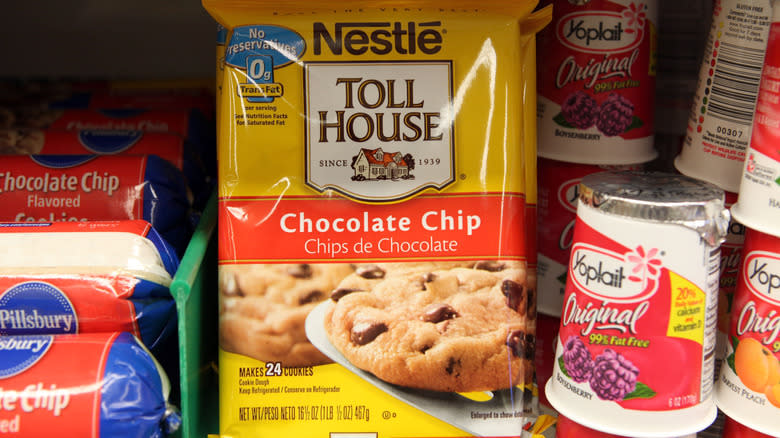
For folks who don't have the time or energy to make their cookie dough (we don't blame you, life is busy, y'all), store-bought cookie dough is the next best thing. You should always, however, be careful about which one you're buying, if you're planning on eating it raw. Certain brands make edible and non-edible versions of raw cookie dough, and picking the wrong one as an after-dinner treat can leave you incredibly sick.
It always pays, therefore, to look at the label closely. Toll House, for example, makes an edible version of its regular cookie dough that comes in a similar-looking tub but contains heat-treated flour and no eggs. Pillsbury and Ben & Jerry's also make edible cookie dough products that you can enjoy straight out of the fridge. It's crucial to keep in mind that these edible cookie doughs will usually not bake as well as non-edible ones will, as they're often missing ingredients that would cause them to set and rise. In our book, though, that's just another reason to buy both edible and non-edible kinds and keep them around for all of your cookie cravings.
Throwing Out Leftover Cookie Dough
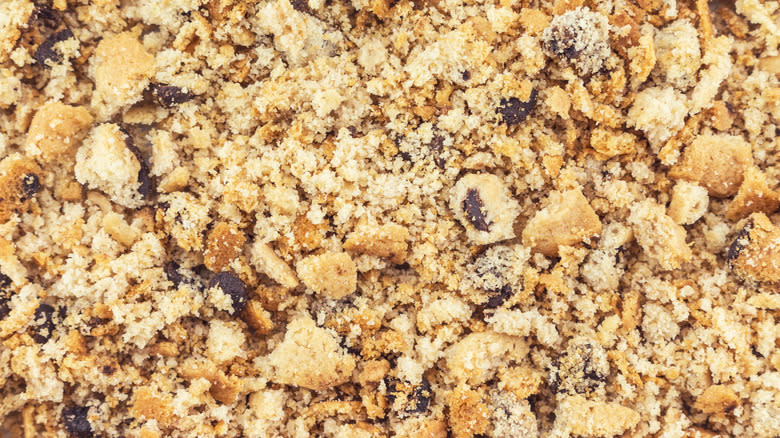
If you're not feeling wholly comfortable about eating your leftover raw cookie dough, we can see why some of it can end up in the trash. In our book, though, this is a huge waste of potential. Not only is throwing out leftover cookie dough contributing to food waste, but it also stops you from having an ingredient at hand that can be used to make further delicious desserts.
By spreading your leftover cookie dough into one giant cookie, baking it, and then crumbling it up, you can produce a delicious topping that can be used on anything from parfait to ice cream to fruit salad. You can also mix your leftover cookie dough into other baked goods or, if you have enough, allow it to replace another baked good entirely -- like a pie crust. If you've made an edible cookie dough, try freezing it in a big ball and then shaving off little pieces as a delectable topper for cheesecake or frozen yogurt. Additionally, remember that if you have more cookie dough than you know what to do with, you can always just freeze it, defrost it, and use it to make your next batch.
Read the original article on Daily Meal.

